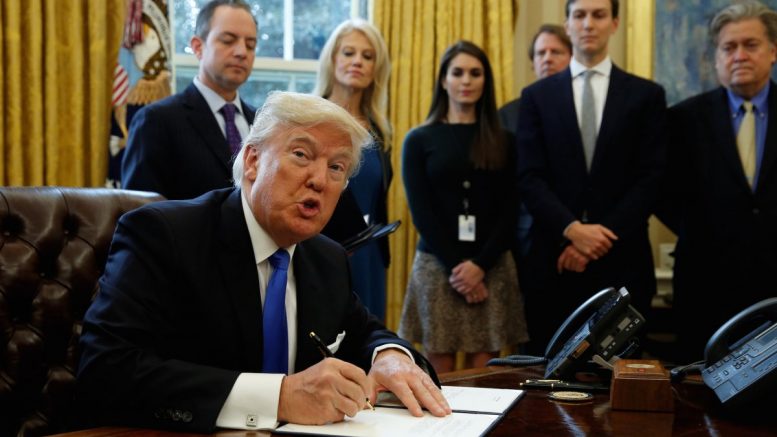President Donald Trump’s first two weeks in office were filled with a flurry of action, and he’s just getting started.
The 45th president has signed 22 executive actions so far, with far-reaching effects on Americans’ lives.
While many of them have been billed as executive orders in the popular vernacular, most of them were technically presidential memoranda or proclamations.
The three types of executive actions have different authority and effects, with executive orders holding the most prestige:
Executive orders are assigned numbers and published in the federal register, similar to laws passed by Congress, and typically direct members of the executive branch to follow a new policy or directive.
Presidential memoranda do not have to be published or numbered (though they can be), and usually, delegate tasks that Congress has already assigned the president to members of the executive branch.
Finally, while some proclamations — like President Abraham Lincoln’s emancipation proclamation — have carried enormous weight, most are ceremonial observances of federal holidays or awareness months.
Scholars have typically used the number of executive orders per term to measure how much presidents have exercised their power. George Washington only signed eight his entire time in office, according to the American Presidency Project, while FDR penned over 3,700.
In his two terms, President Barack Obama issued 277 executive orders, a total number on par with his modern predecessors, but the lowest per year average in 120 years.
Here’s a quick guide to the executive actions Trump has made so far, what they do, and how Americans have reacted to them:
- Executive Order, February 3: Reviewing Wall Street regulations
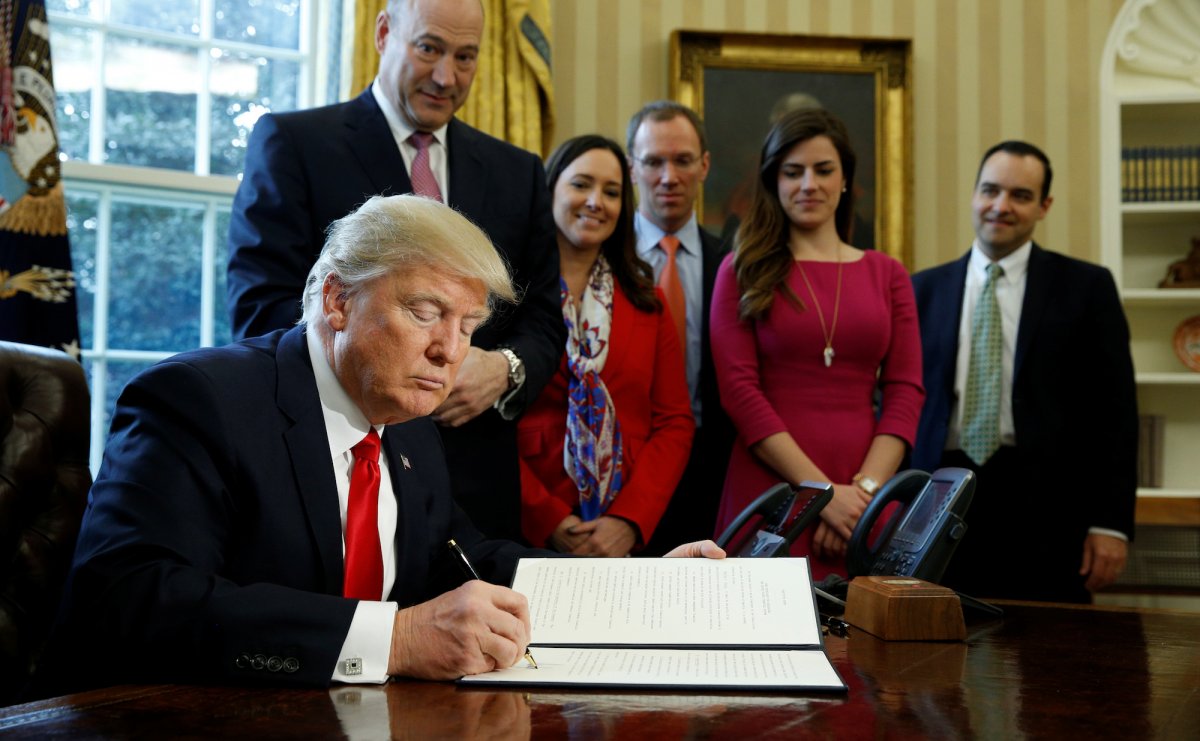
President Donald Trump signs an executive order rolling back regulations from the 2010 Dodd-Frank law on Wall Street reform on Feb. 3, 2017 in the Oval Office.REUTERS/Kevin Lamarque
Trump signed two actions on Friday that could end up rewriting regulations in the financial industry that Obama and Congress put in place after the 2008 financial crisis.
The executive order sets “Core Principles” of financial regulation declaring that Trump’s administration seeks to empower Americans to make their own financial decisions, prevent taxpayer-funded bailouts, and reduce regulations on Wall Street so US companies can compete globally.
It also directs the Secretary of Treasury to review existing regulations on the financial system, determine whether the Core Principles are being met, and report back to the President in 120 days.
Experts worry that loosening regulations could roll back the Obama administration’s landmark consumer protection reform bill, Dodd-Frank, aimed at reducing risk in the financial system. Sen. Elizabeth Warren, the progressive darling from Massachusetts, led the charge decrying the actions.
Read the full text of the order here
- Presidential Memorandum, February 3: Reviewing the fiduciary duty rule
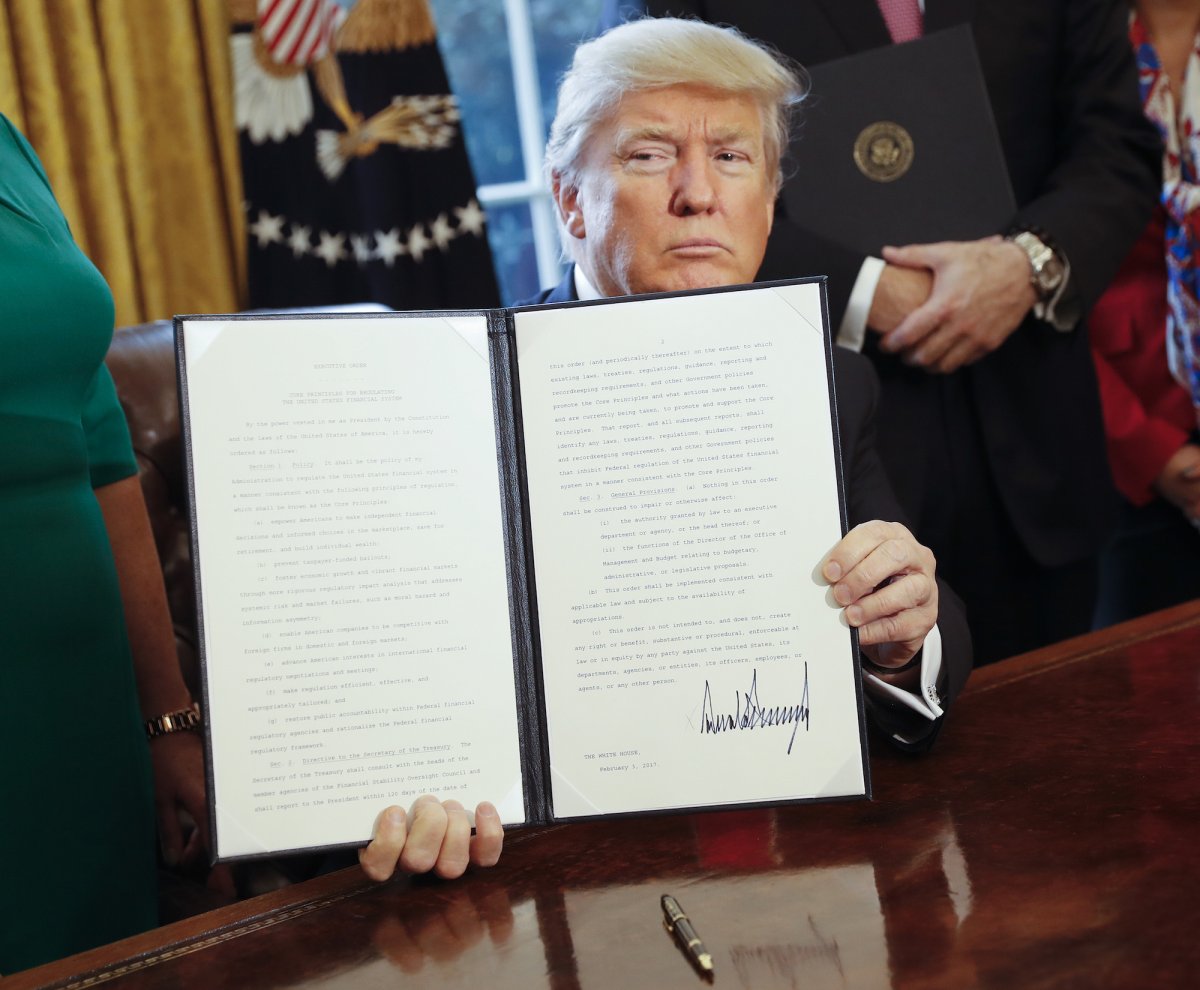
President Donald Trump signs an executive action in the White House.AP
The memorandum directs the Treasury Secretary to review the “fiduciary rule,” another Obama-era law intended to protect Americans’ retirement money from conflicted advice from financial advisers that has long drawn rebuke from Wall Streeters and was scheduled to go into effect in April.
If the secretary finds the rule conflicts with the administration’s Core Principles, adversely affects the retirement industry, or causes increased litigation, then he should recommend revising or repealing the rule.
Democratic lawmakers and 38-million-member retiree nonprofit AARP came out against the action.
Read the full text of the memorandum here
- Presidential proclamation, February 2: American Heart Month
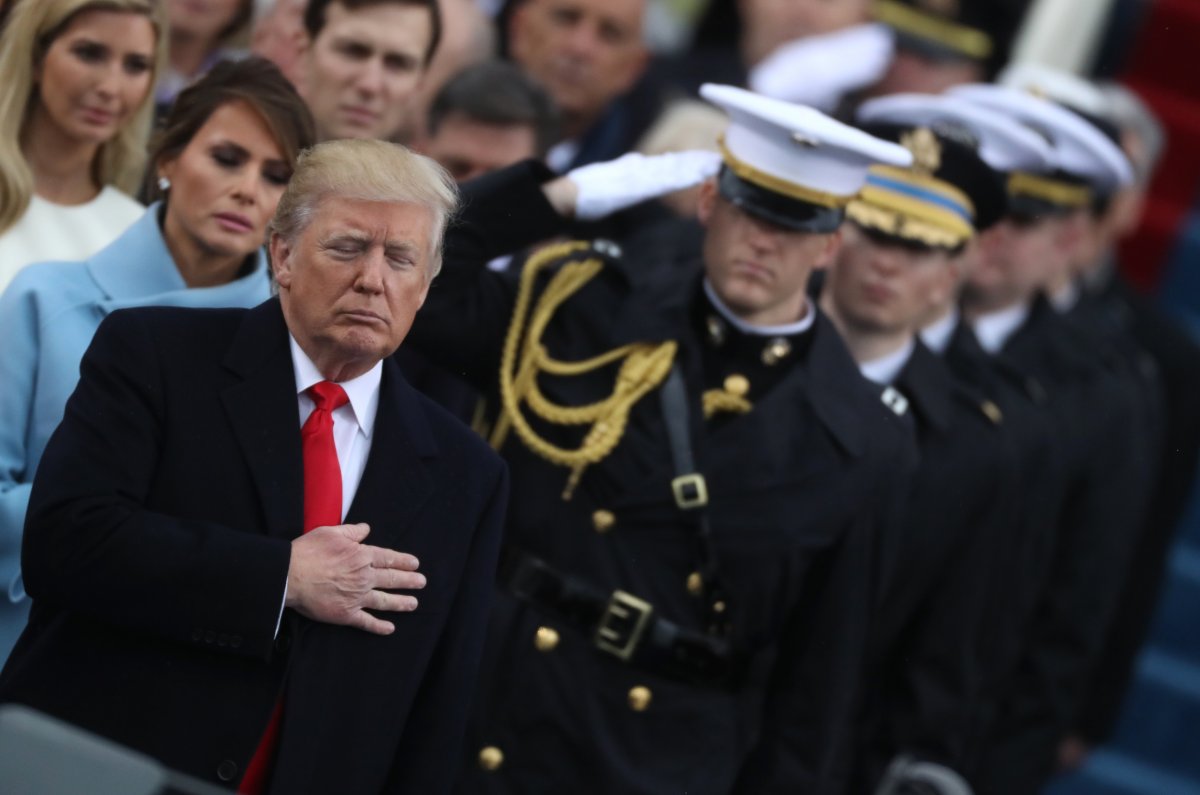
President Donald Trump and his wife Melania stand for the singing of the National Anthem during his inauguration ceremony at the Capitol on January 20, 2017.REUTERS/Carlos Barria
This ceremonial proclamation invited Americans to wear red on Friday, February 3, 2017 for National Wear Red Day, and followed Congress’ request in 1963 for presidents to annually declare February American Heart Month. The goal is to remember those who have died from heart disease and to improve its prevention, detection, and treatment.
Read the full text of the proclamation here
- Executive Order, January 30: For every new regulation proposed, repeal two existing ones
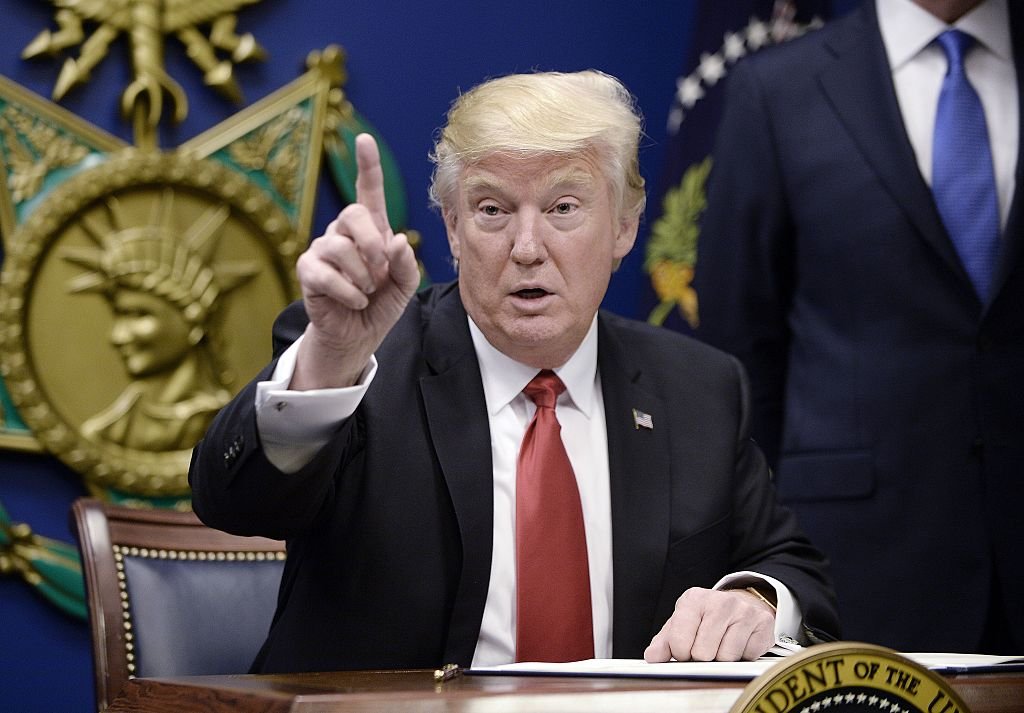
President Donald Trump.Olivier Douliery-Pool/Getty Images
The order states that for every one regulation the executive branch proposes, two must be identified to repeal. It also caps the spending on new regulations for 2017 at $0.
Some environmental groups expressed concern that the order could undo regulations put in place to protect natural resources.
Read the full text here
- Executive Order, January 28: Drain the swamp

Trump’s Cabinet nominees.Skye Gould/Business Insider
The order requires appointees to every executive agency to sign an ethics pledge saying they will never lobby a foreign government and that they won’t do any other lobbying for five years after they leave government.
But it also loosened some ethics restrictions that Obama put in place, decreasing the number of years executive branch employees had to wait since they had last been lobbyists from two years to one.
Read the full text here
- Presidential Memorandum, January 28: Reorganizing the National and Homeland Security Councils
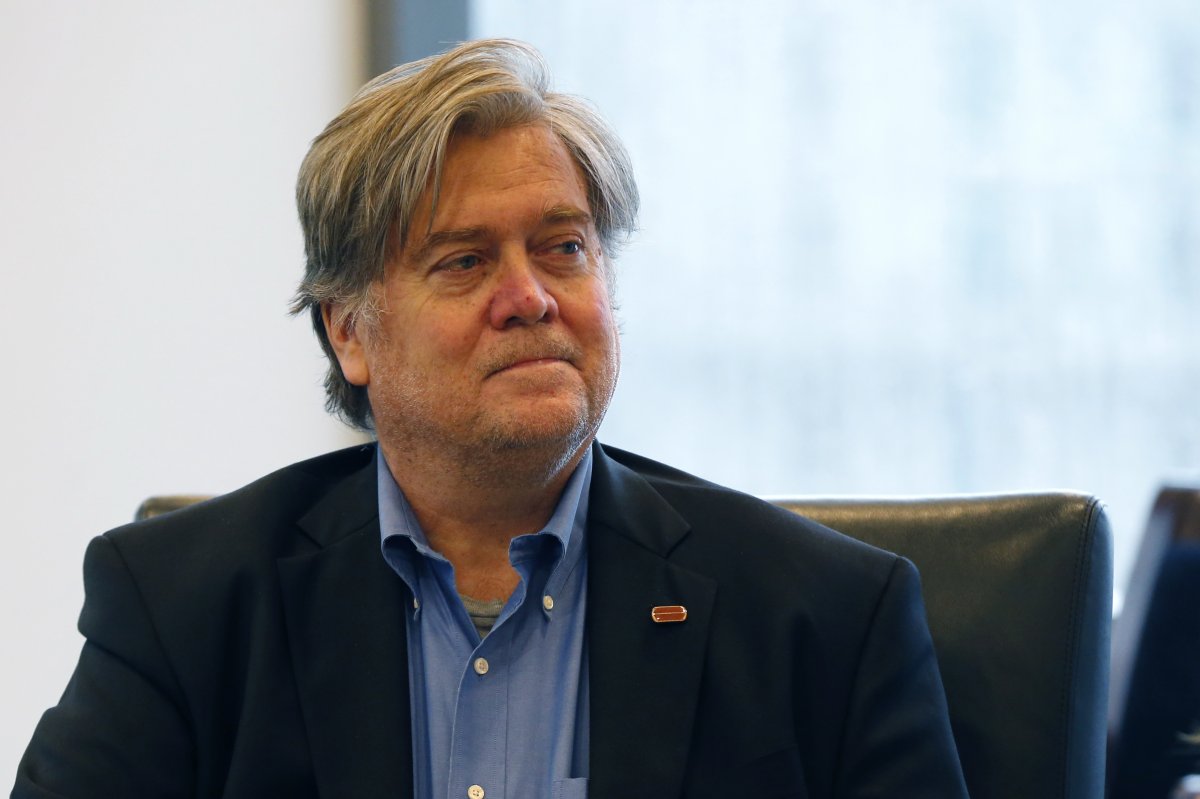
Chief White House strategist Steve Bannon.AP Photo/Gerald Herbert
Trump removed the nation’s top military and intelligence advisers as regular attendees of the National Security Council’s Principals Committee, the interagency forum that deals with policy issues affecting national security.
The executive measure established Trump’s chief strategist, Steve Bannon, as a regular attendee, and disinvited the chairman of the Joint Chiefs of Staff and the Director of National Intelligence to attend only when necessary.
Top Republican lawmakers and national security experts roundly criticized the move, expressing their skepticism that Bannon should be present and alarm that the Joint Chiefs of Staff sometimes wouldn’t be.
Read the full text here
- Presidential Memorandum, January 28: Defeating ISIS

Donald Trump at a rally with James Mattis, his pick for defense secretary.AP
Making a point to use the phrase “radical Islamic terrorism” (something Trump criticized Obama for on the campaign trail), Trump directed his administration “to develop a comprehensive plan to defeat ISIS,” drafted within 30 days.
Read the full text here
- Executive Order, January 27: Immigration ban

Protesters assemble at John F. Kennedy International Airport in New York, Saturday, Jan. 28, 2017 after earlier in the day two Iraqi refugees were detained while trying to enter the country.Associated Press/Craig Ruttle
In Trump’s most controversial executive action yet, he temporarily barred people from majority-Muslim Iran, Iraq, Libya, Somalia, Sudan, and Yemen from entering the country for 90 days, and Syrians from entering until he decides otherwise.
Federal judges in several states declared the order unconstitutional, releasing hundreds of people who were stuck at US airports in limbo. The White House continues to defend the action, insisting it was “not about religion” but about “protecting our own citizens and border.”
Tens of thousands of people protested the action in cities and airports across the US, company executives came out against the order, and top Republicans split with their president to criticize Trump’s approach.
Read the full text here
- Presidential Memorandum, January 27: ‘Rebuilding’ the military

Marine General James Mattis.US Marine Corps
This action directed Secretary of Defense James Mattis to conduct a readiness review of the US military and Ballistic Missile Defense System, and submit his recommendations to “rebuild” the armed forces.
Read the full text here
- Presidential proclamation, January 26: National School Choice Week

Thousands rally in support of charter schools outside the Capitol in Albany, N.Y., on Tuesday, March 4, 2014.AP Images
Trump proclaimed January 22 through January 28, 2017 as National School Choice Week.
The ceremonial move aimed to encourage people to demand school-voucher programs and charter schools, of which Trump’s Secretary of Education nominee Betsy DeVos is a vocal supporter. Meanwhile, opponents argue that the programs weaken public schools and fund private schools at taxpayers’ expense.
Read the full text here
- Executive Order, January 25: Build the wall
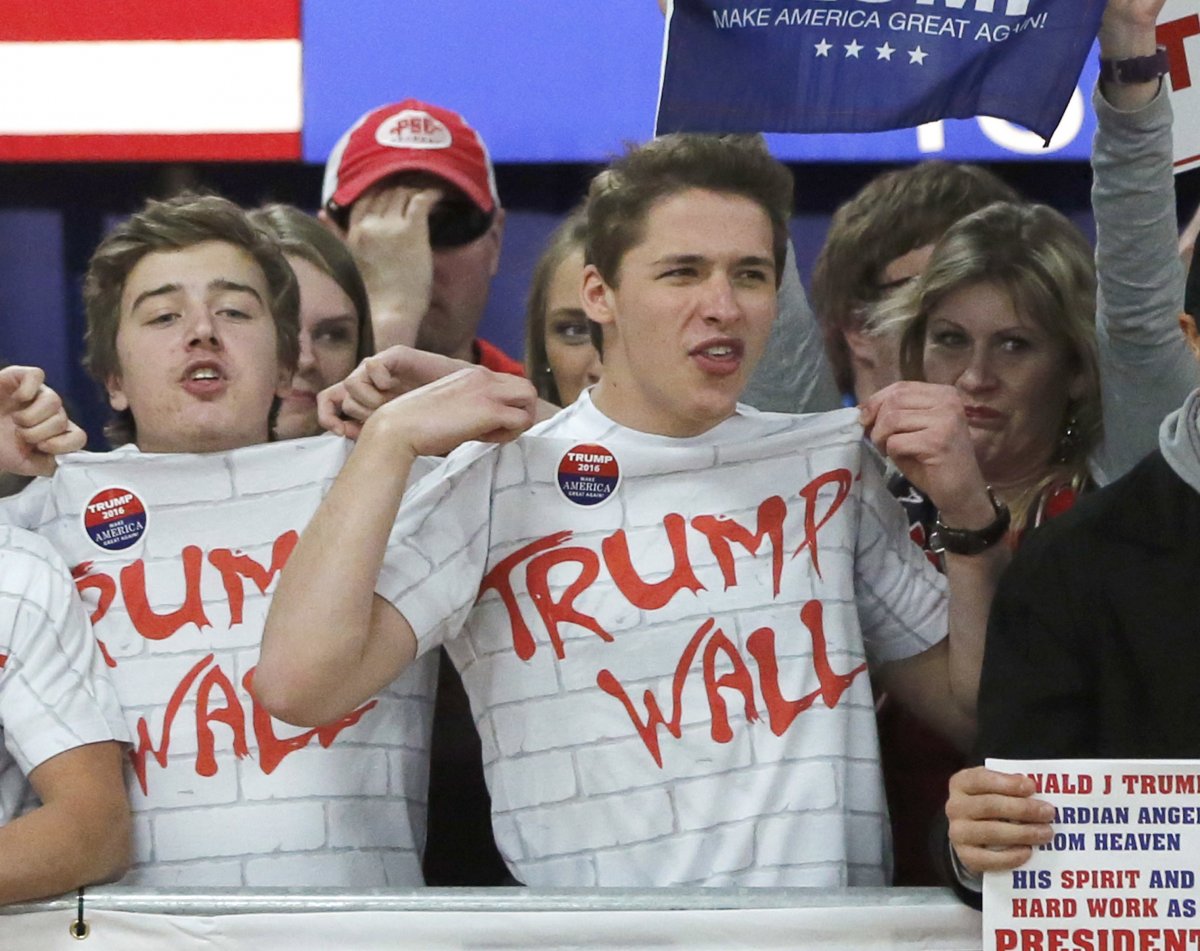
Supporters of then-Republican presidential candidate Donald Trump chant, “Build that wall,” before a town hall meeting in Rothschild, Wis. on April 2, 2016.
Trump outlined his intentions to build a wall along the US border with Mexico, one of his main campaign promises.
The order also directs the immediate detainment and deportation of illegal immigrants, and requires state and federal agencies tally up how much foreign aid they are sending to Mexico within 30 days, and tells the US Customs and Border Protection to hire 5,000 additional border patrol agents.
While Trump has claimed Mexico will pay for the wall, his administration has since softened this pledge, indicating US taxpayers may have to foot the bill, at least at first.
Read the full text here
- Executive Order, January 25: Cutting funding for sanctuary cities
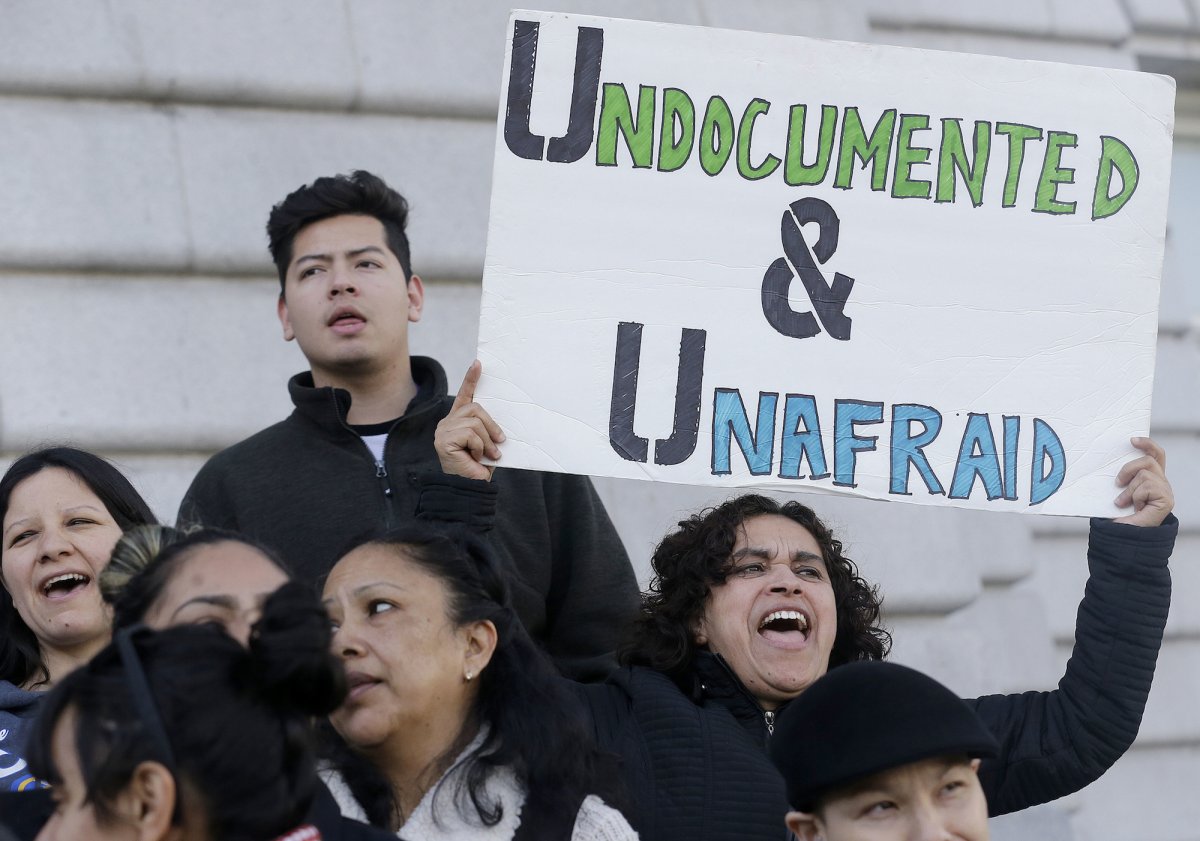
Lordes Reboyoso, right, yells at a rally outside of City Hall in San Francisco, Wednesday, Jan. 25, 2017.Associated Press/Jeff Chiu
Trump called “sanctuary cities” to comply with federal immigration law or have their federal funding pulled.
The order has prompted a mixture of resistance and support from local lawmakers and police departments in the sanctuary cities, which typically refuse to honor federal requests to detain people on suspicion of violating immigration law even if they were arrested on unrelated charges. The city of San Francisco is already suing Trump, claiming the order is unconstitutional.
Read the full text here
- Executive Order, January 24: Expediting environmental review for infrastructure projects

Then Republican presidential candidate Donald Trump holds a campaign rally.
The order allows governors or heads of federal agencies to request an infrastructure project be considered “high-priority” so it can be fast-tracked for environmental review.
Trump signed the order as a package infrastructure deal, along with three memoranda on oil pipelines.
Read the full text here
- 3 Presidential Memoranda, January 24: Approving pipelines
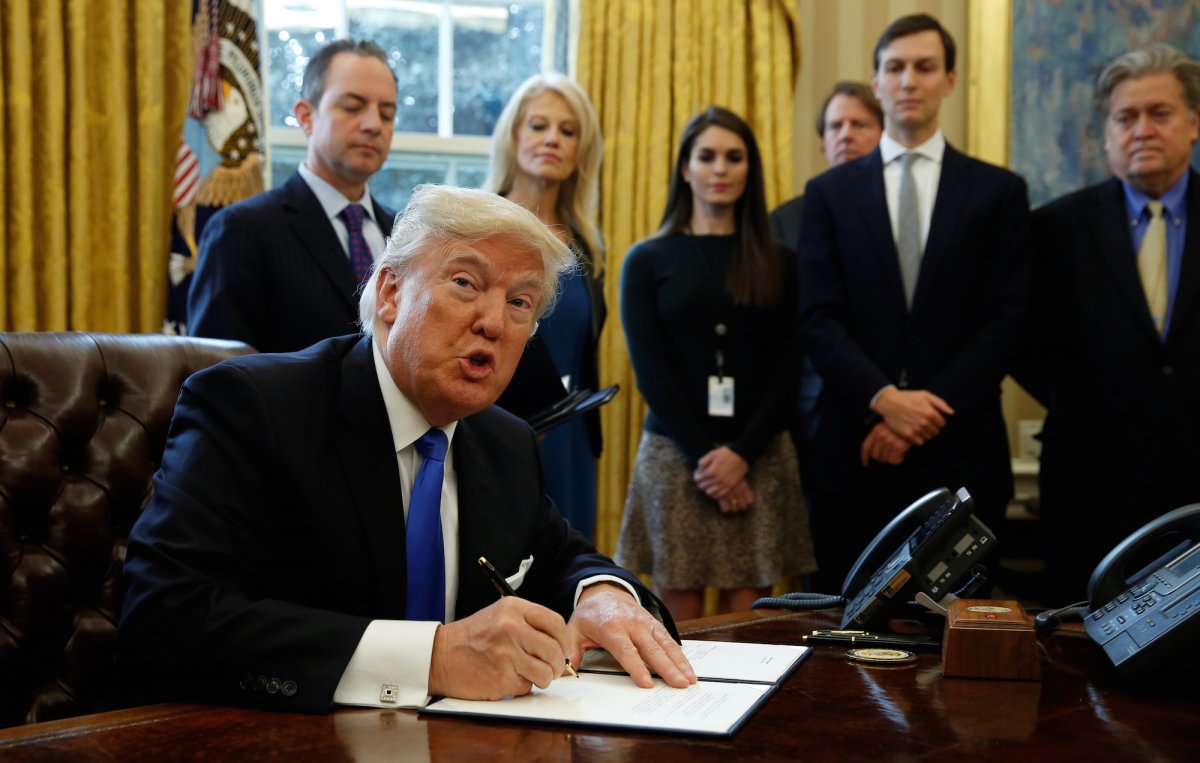
President Donald Trump looks up while signing an executive action to advance construction of the Keystone XL pipeline at the White House in Washington January 24, 2017.Reuters/Kevin Lamarque
Trump signed three separate memoranda set to expand oil pipelines in the United States, a move immediately decried by Native American tribes, Democrats, and activists.
The first two direct agencies to immediately review and approve construction of the Dakota Access Pipeline and the Keystone XL Pipeline, and the third requires all pipeline materials be built in the US.
While pipeline proponents argue that they transport oil and gas more safely than trains or trucks can, environmentalists say pipelines threaten the contamination of drinking water.
Read the full text of all three memoranda here
- Presidential Memorandum, January 24: Reduce regulations for US manufacturing
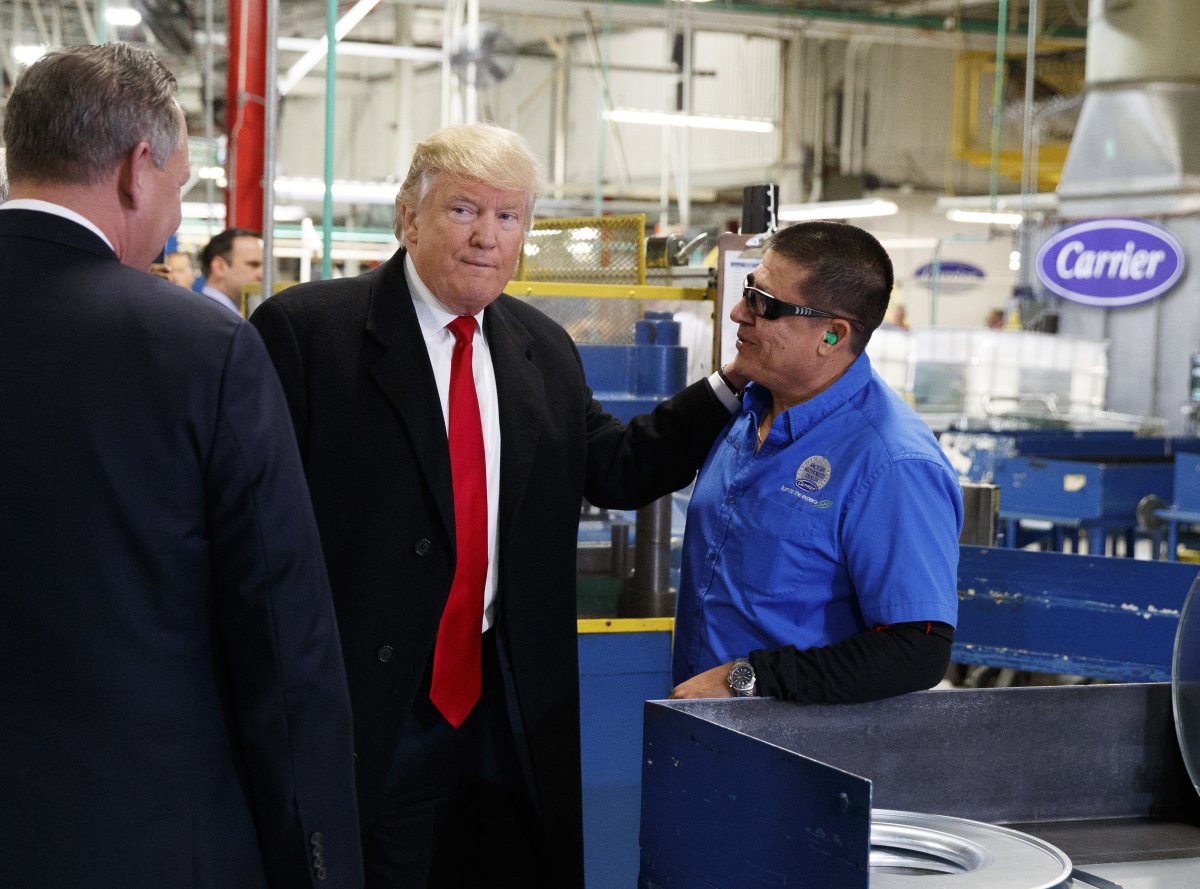
President-elect Donald Trump talks with workers during a visit to the Carrier factory on Dec. 1, 2016, in Indianapolis, Ind.AP Photo/Evan Vucci
Trump directed his Secretary of Commerce to review how federal regulations affect US manufacturers, with the goal of figuring out how to reduce them as much as possible.
Read the full text here
- Presidential Memorandum, January 23: Reinstating the ‘Mexico City policy’

Hundreds of thousands of protesters march down Pennsylvania avenue during the Women’s March on Washington January 21, 2017 in Washington, DC to protest newly inaugurated President Donald Trump.Aaron P. Bernstein/Getty Image
The move reinstated a global gag rule that bans American non-governmental organizations working abroad from discussing abortion.
Democratic and Republican presidents have taken turns reinstating it and getting rid of it since Ronald Reagan created the gag order in 1984. The rule, while widely expected, dismayed women’s rights and reproductive health advocates, but encouraged antiabortion activists.
Read the full text here
- Presidential Memorandum, January 23: Hiring Freeze
 Trump froze all hiring in the executive branch excluding the military, directing no vacancies be filled, in an effort to cut government spending and bloat.
Trump froze all hiring in the executive branch excluding the military, directing no vacancies be filled, in an effort to cut government spending and bloat.
Union leaders called the action “harmful and counterproductive,” saying it would “disrupt government programs and services that benefit everyone.”
Read the full text here
- Presidential Memorandum, January 23: Out of the TPP
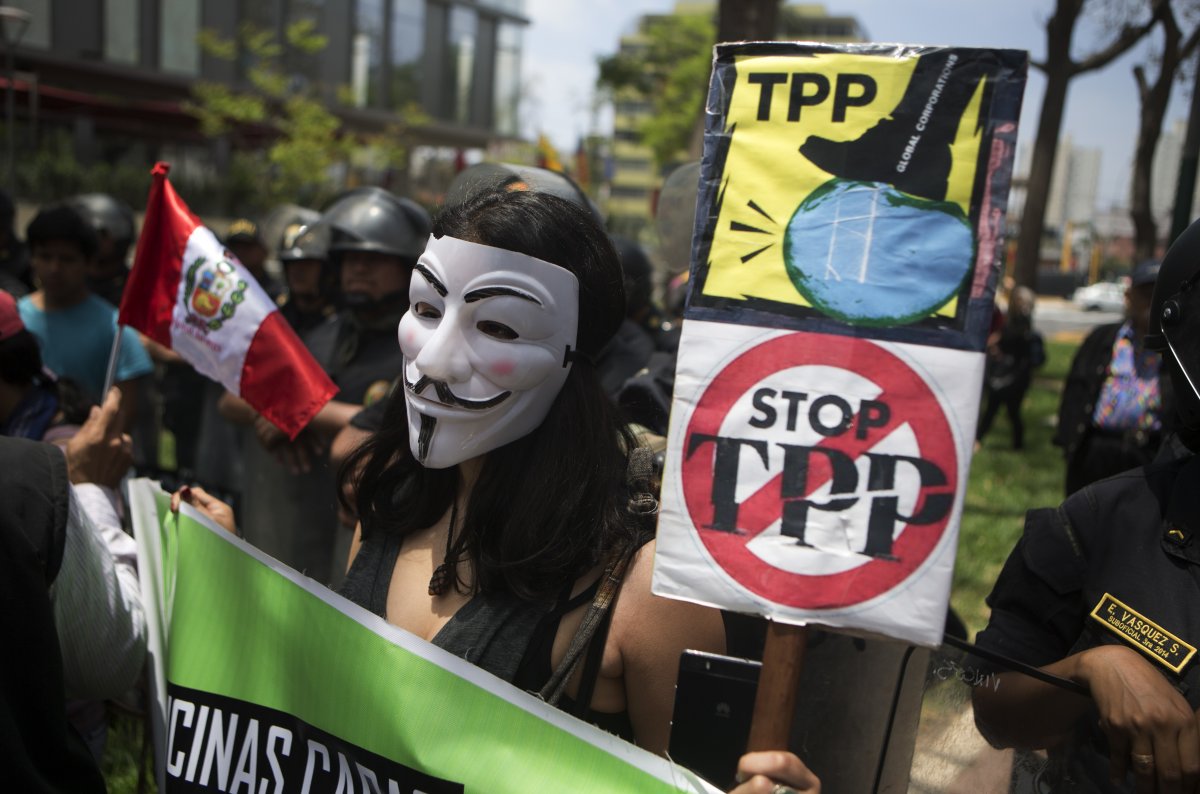
A protester holds signs against the TPP during a rally in Lima, Peru.Esteban Felix/AP Photo
This action signaled Trump’s intent to withdraw from the Trans Pacific Partnership, a trade deal that would lower tariffs for 12 countries around the Pacific Rim, including Japan and Mexico but excluding China.
Results were mixed. Sen. Bernie Sanders said he was “glad the Trans-Pacific Partnership is dead and gone,” while Republican Sen. John McCain said withdrawing was a “serious mistake.”
Read the full text here
- Executive Order, January 20: Declaring Trump’s intention to repeal the Affordable Care Act
 One of Trump’s top campaign promises was to repeal and replace the Affordable Care Act, commonly called Obamacare.
One of Trump’s top campaign promises was to repeal and replace the Affordable Care Act, commonly called Obamacare.
His first official act in office was declaring his intention to do so. Congressional Republicans have been working to do just that since their term started January 3, though there’s dissent among Republicans over whether or not to complete the repeal process before a replacement plan is finalized and strident Democratic resistance to any repeal of the ACA.
Read the full text here
Presidential Memorandum, January 20: Reince’s regulatory freeze
 Trump’s Chief of Staff Reince Priebus signed this action, directing agency heads not to send new regulations to the Office of the Federal Register until the administration has leaders in place to approve them.
Trump’s Chief of Staff Reince Priebus signed this action, directing agency heads not to send new regulations to the Office of the Federal Register until the administration has leaders in place to approve them.
Obama’s Chief of Staff Rahm Emanuel signed a similar memorandum when he took office in 2009, but as Bloomberg notes, Priebus changed the language from a suggestion to a directive.
The action is partly carried out to make sure the new administration wants to implement any pending regulations the old one was considering. Environmentalists worried if this could mean Trump is about to undo many of Obama’s energy regulations.
– Rebecca Harrington I Business Insider
Read the full text here

